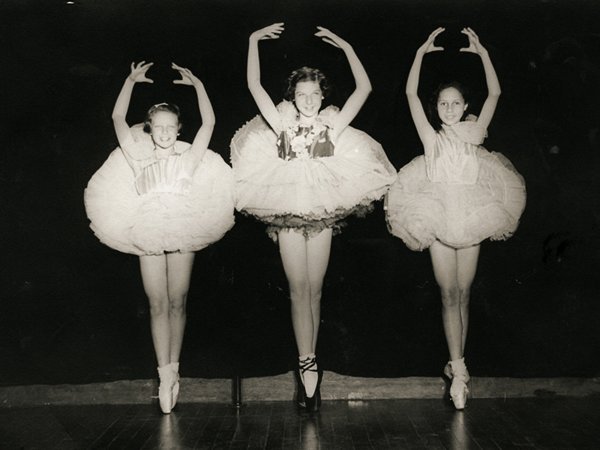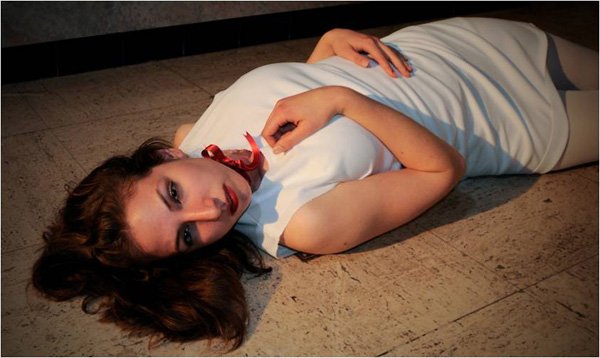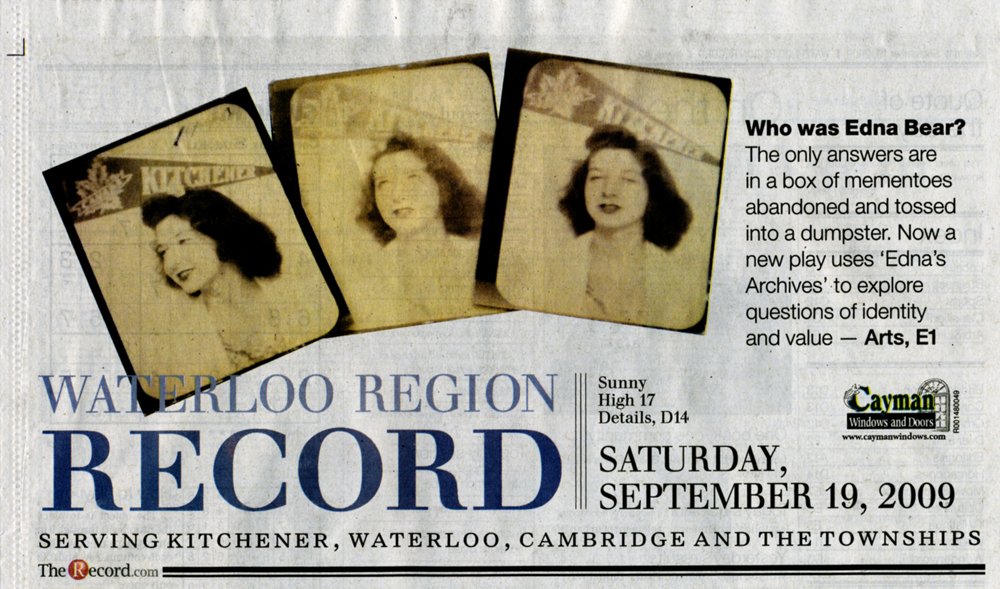EDNA’S
ARCHIVE
THE EDNA BEAR
PROJECT
ABOUT THE PROJECT
At this point, I thought it was important to identify Edna’s materials as an archive, and I did so out of respect for her memory, but also because the idea of an archive is troubling when we consider its social and historical place in a community. The Greek root for ‘archive’ is a reference to the house of Archon, the head of state, or the mayor of the city. How can the formal housing or display of memory shape a community’s sense of the past? Questions of value arise concerning what is chosen for display and what is left out. How do these choices create a kind of architecture of social memory, a memory that demands visible or materially traceable remains?
When the offer came to stage Edna Bear’s archive in the PUC Building, it seemed as though our questions and concerns about the worth of the archive were effectively magnified through this site and its place in downtown Kitchener. Both the building and the neighbourhood have experienced abandonment and reclamation; both are places of dreams and difficulty, and in the shadow of City Hall, each space finds itself in a complicated negotiation of value. In this building with a history of utility and safe-keeping, perhaps we can secure a sense of a woman’s identity in relation to our own; in absence of an officially sanctioned archive for her things, perhaps we can offer her something better: a home in our hearts and imaginations.
Perhaps we understand ourselves relative to the things we accumulate, the pictures we take, the souvenirs we keep, the writing we save, the material traces we acknowledge. History is composed of documents because the documents are all that remain. But what if such remains are lost, or nearly lost, as was the case with Edna Bear? Is this person’s history of less value? Do we simply forget them, or is there something important to learn from our relationship to the nearly lost – in ourselves, in others and in our city?
This project began about a year ago with a class of dramaturgy students, who were asked to research what Edna Bear had left behind. The class had an array of responses to the assignment: some were fascinated by the history they found, some could relate to her aspirations – to perform, to entertain, to have a good marriage, to escape her hometown and travel the world, and some could care less. After all, what remained of Edna’s life was found in a cardboard box by a dumpster, wasn’t it? Some in the class thought ‘who cares about this woman and all of her photos?’ They wondered if all of her stuff wasn’t just garbage.
EXPERIENCE THE AUDIO









